
Roots
Our hair, particularly textured hair, holds a history, a memory of traditions passed down through generations, and a scientific marvel in its structure. It responds to the world around it, to our touch, to the very air it breathes. Yet, beneath the visible coils and strands, at the very foundation of our hair’s being, lies a complex, bustling world—the scalp.
This living landscape, a delicate ecosystem of microbes, humidity, and natural oils, dictates much about the vitality of our hair. To truly understand how our practices influence our strands, we must first look to this unseen realm, to the intricate balance that underpins scalp health.
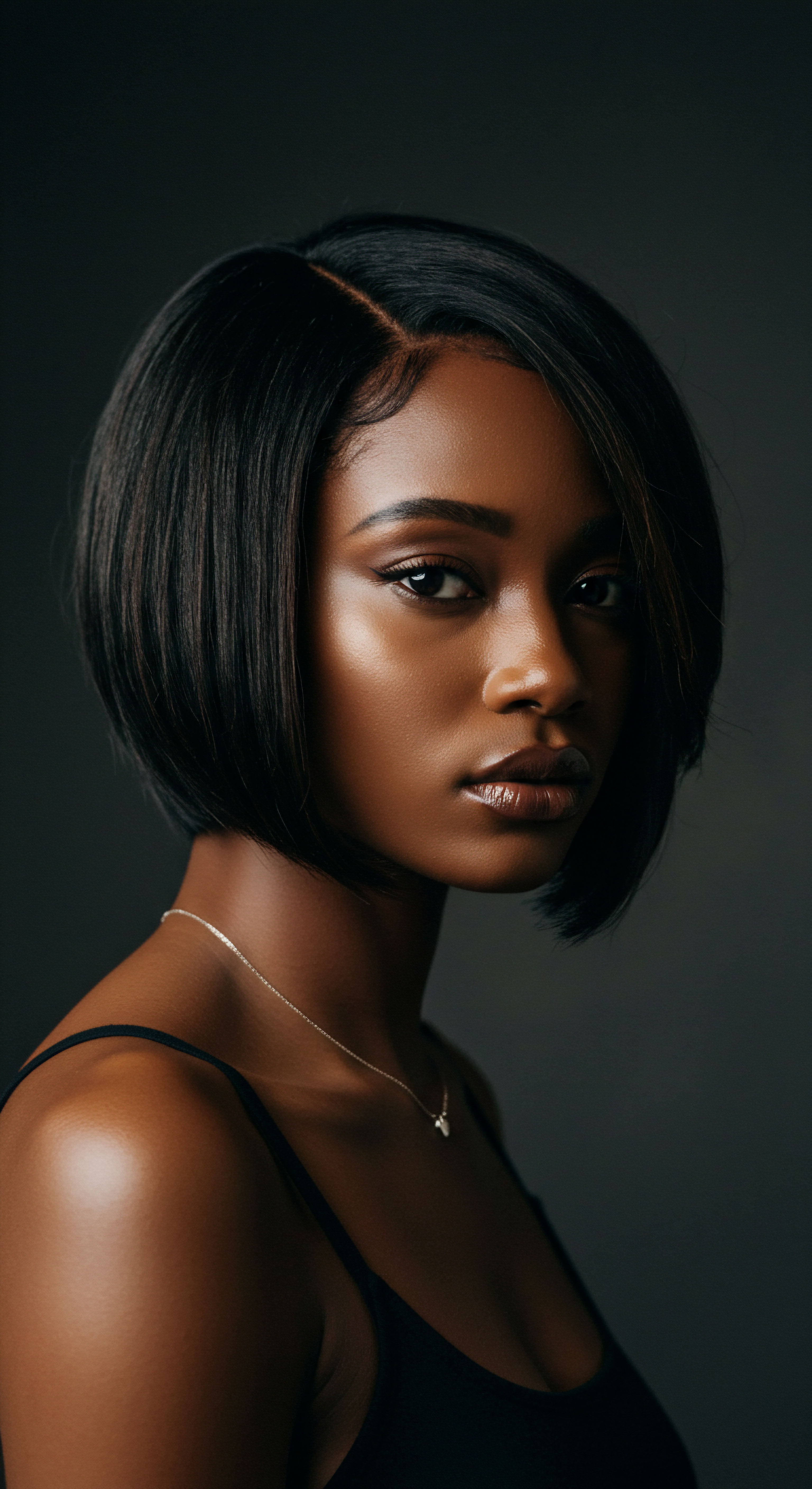
The Scalp’s Living Surface
The human scalp is a unique biological niche, distinct from other skin areas. It boasts a high density of hair follicles and sebaceous glands, creating an environment rich in lipids and moisture. This specialized setting plays host to a diverse community of microorganisms—bacteria, fungi, and yeasts—collectively known as the scalp microbiome. This microbiome is not merely a collection of passive residents; it is an active participant in maintaining scalp health.
Commensal organisms, those that coexist with us without causing harm, contribute to a protective barrier, help regulate inflammation, and maintain the scalp’s acidic pH. A healthy scalp pH, typically between 5 and 6, discourages the proliferation of many harmful pathogens.
Among the prominent residents are bacteria such as Cutibacterium Acnes (formerly Propionibacterium acnes) and Staphylococcus Epidermidis, alongside fungi like Malassezia species. These organisms, while normal components of a balanced scalp, can become problematic when their populations shift. For instance, Malassezia yeasts thrive on sebum, metabolizing the fatty compounds into free fatty acids.
In a balanced state, this interaction is part of normal scalp physiology. However, when conditions change, this delicate equilibrium can tip, leading to various scalp concerns.
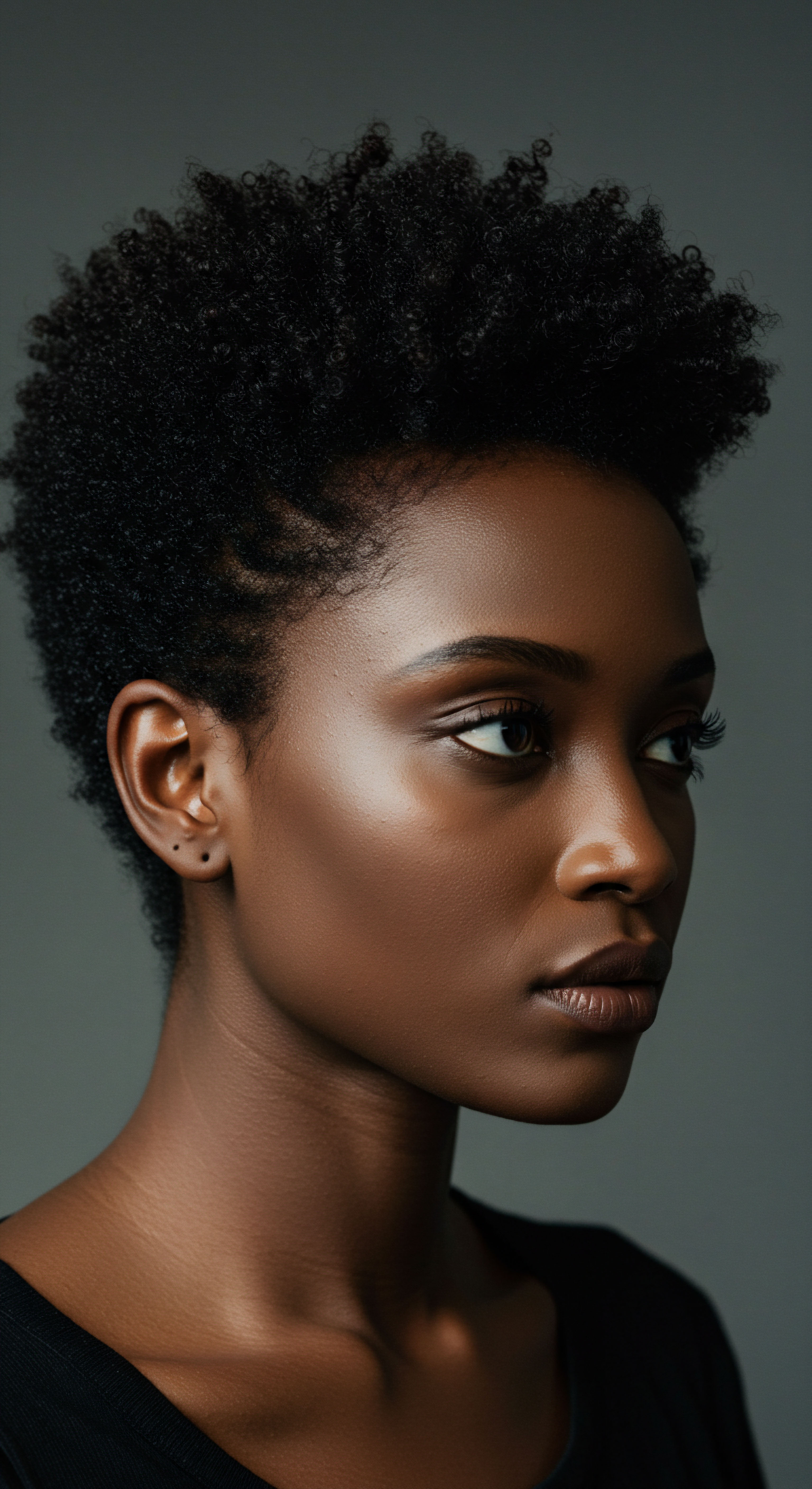
What Constitutes a Balanced Scalp Microbiome?
A balanced scalp microbiome is characterized by a healthy diversity of microbial species, where beneficial organisms maintain control over potentially harmful ones. This diversity contributes to the scalp’s natural defenses, offering protection against external aggressors and internal imbalances. The skin’s barrier function, its ability to keep irritants out and moisture in, is deeply tied to the health of this microbial community.
When this balance is disturbed, a state known as dysbiosis occurs. This can manifest as itching, flaking, redness, or even hair thinning.
A balanced scalp microbiome is a dynamic ecosystem, crucial for the vitality of our hair and the overall well-being of the scalp.
Factors influencing this microbial landscape are numerous and interconnected. Genetic predispositions, for example, play a role in determining sebum production and hair density, both of which shape the scalp environment. Lifestyle elements, including diet, stress, and hormonal fluctuations, also exert influence, as do daily hair care routines and the products chosen. Understanding these foundational elements is the first step in appreciating how external factors, such as occlusion, can ripple through this intricate system.
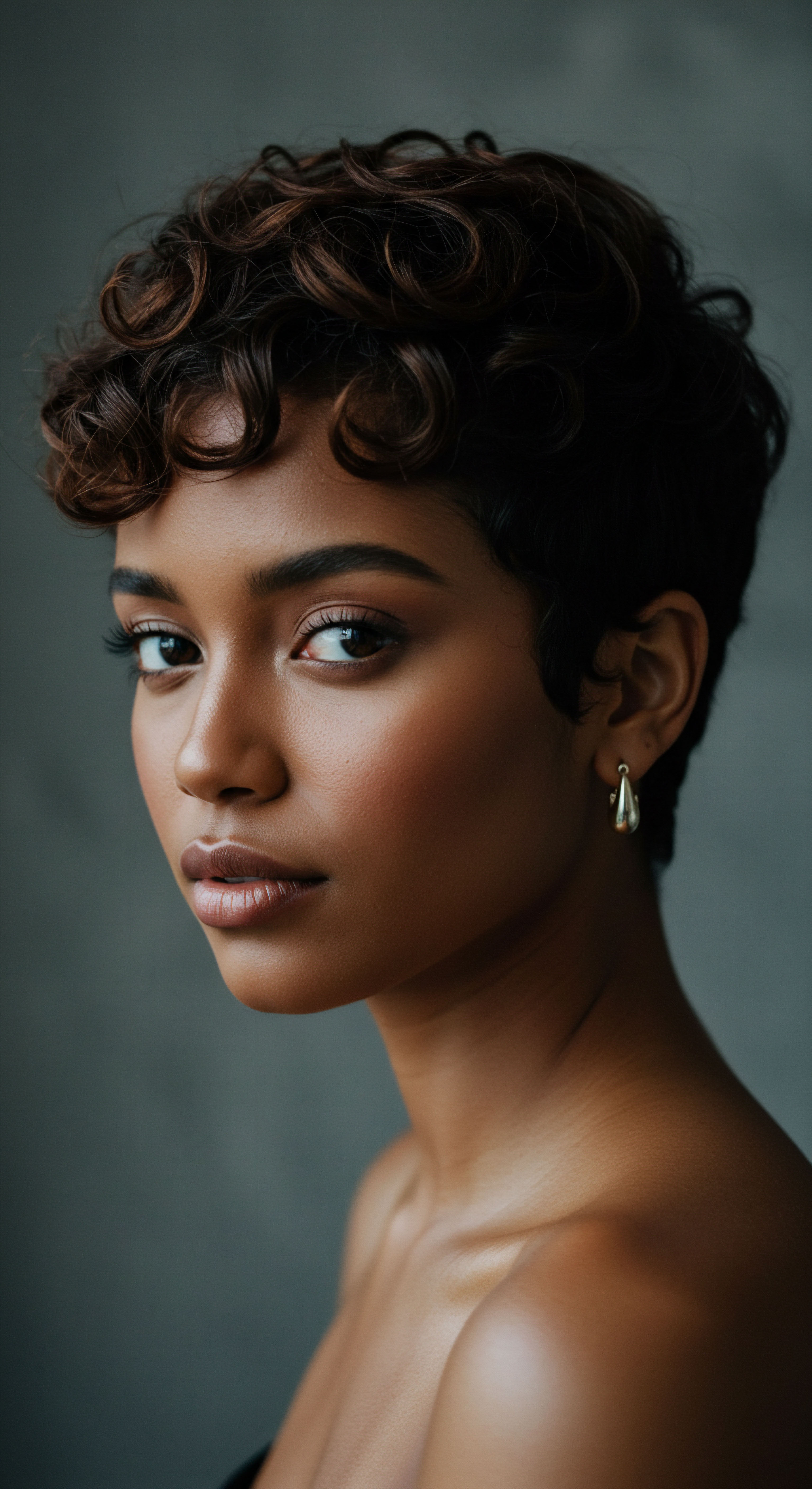
The Scalp’s Natural Environment
The scalp’s microenvironment is a complex interplay of several physical and chemical parameters that influence microbial growth.
- Temperature ❉ The scalp generally maintains a warmer temperature than other exposed skin areas due to the insulating effect of hair.
- Humidity ❉ The presence of hair and sweat glands contributes to a moist environment, especially closer to the scalp surface.
- PH Level ❉ A healthy scalp typically maintains an acidic pH, around 4.5 to 5.5, which helps inhibit the growth of certain pathogenic bacteria.
- Sebum Production ❉ Sebaceous glands release sebum, a lipid-rich substance that provides nutrients for lipophilic (lipid-loving) microbes like Malassezia and Cutibacterium acnes.
- Oxygen Availability ❉ Hair follicles offer deeper, more anoxic (low oxygen) niches, favoring the presence of anaerobic bacteria.
Each of these elements contributes to the unique conditions that define the scalp microbiome. Any shift in these parameters can create an opening for certain microbial populations to proliferate, potentially leading to an imbalance.
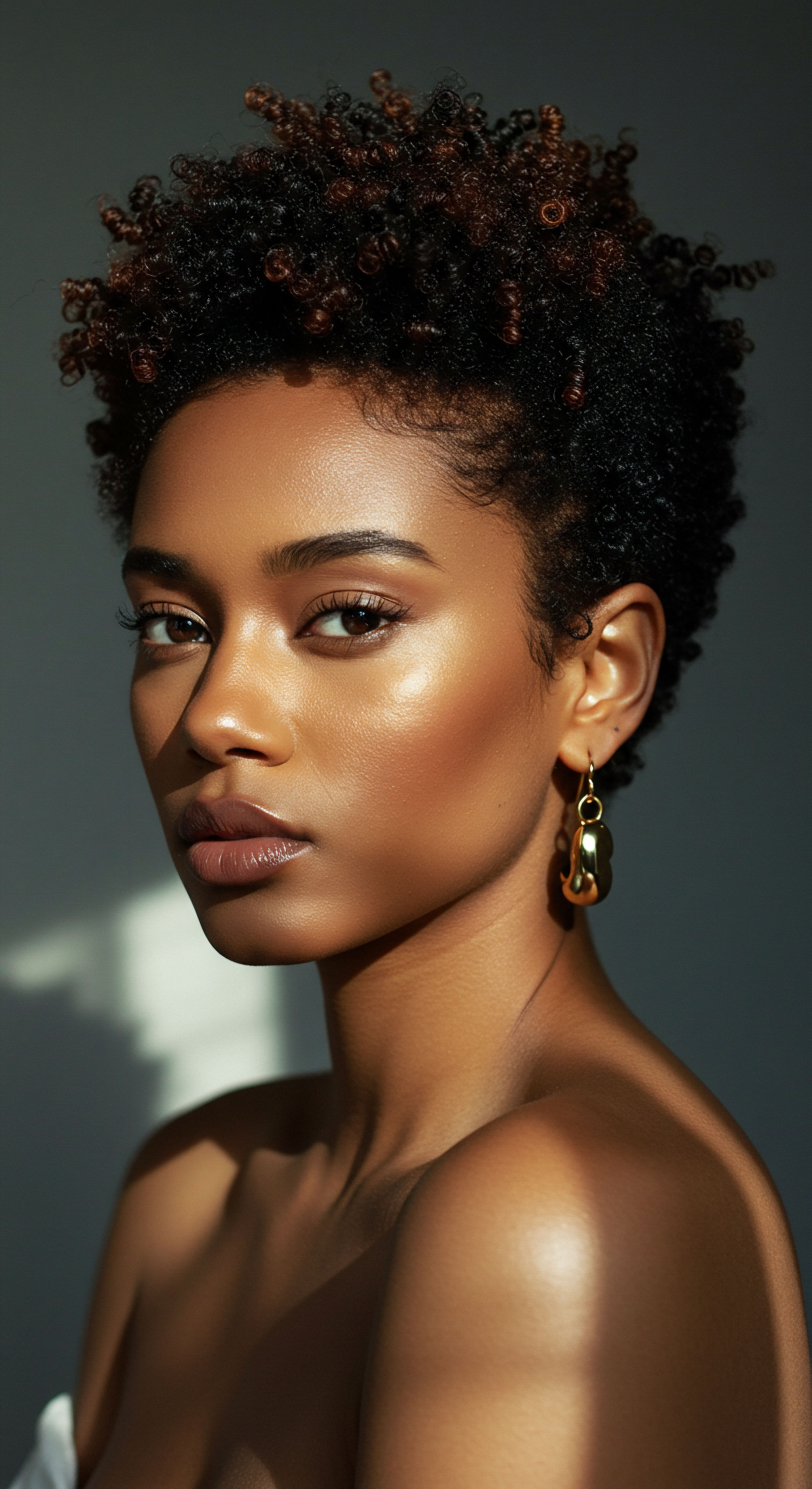
Ritual
Our daily and weekly hair rituals, from cleansing to styling, are more than mere routines; they are conversations with our hair, a dance of care and adornment. Yet, within these practices, particularly those involving covering or compressing the hair and scalp, lies a subtle yet powerful influence on the unseen world beneath. The choices we make about protective styles, bonnets, and other forms of occlusion directly alter the delicate atmospheric conditions of our scalp, thereby shifting the balance of its microbial residents. It is in these moments of intention, often performed with deep cultural resonance, that we must also consider the quiet whispers of our scalp’s living surface.

How Head Coverings Transform the Scalp’s Climate
Occlusion, broadly defined as the act of covering or enclosing a part of the body, creates a modified microenvironment. On the scalp, this typically means an increase in temperature and humidity. When the scalp is covered by headwraps, bonnets, wigs, or tight protective styles, the natural evaporation of sweat and sebum is hindered. This leads to a warmer, more humid environment directly at the scalp surface.
This altered climate directly impacts the microbial residents. Many microorganisms, particularly yeasts like Malassezia, thrive in warm, moist conditions. An increase in humidity and temperature can encourage their overgrowth, shifting the scalp microbiome from a balanced state to one of dysbiosis. Similarly, some bacteria that prefer low-oxygen environments may also find a more hospitable home under occlusive conditions.

The Impact of Increased Humidity and Temperature
Elevated humidity and temperature on the scalp can have several cascading effects on microbial populations:
- Yeast Proliferation ❉ Malassezia species, often associated with dandruff and seborrheic dermatitis, are particularly sensitive to moisture levels. Increased humidity can lead to their rapid growth, contributing to flaking, itching, and inflammation.
- Bacterial Shifts ❉ While some beneficial bacteria may be inhibited by excessive moisture, others, including certain Staphylococcus species, can thrive. Research indicates that prolonged occlusion can lead to a significant increase in total bacterial counts and a shift in the composition of the microbial flora, with a rise in coagulase-negative staphylococci and lipophilic diphtheroids.
- PH Alteration ❉ Occlusion can also lead to an increase in the scalp’s pH, making it more alkaline. A study showed that skin pH increased from an average of 4.38 to 7.05 after five days of occlusion. This shift from the naturally acidic state can favor the growth of pathogenic bacteria, such as Staphylococcus Aureus, which are inhibited by acidic conditions.
Occlusive practices can inadvertently create a warm, moist environment, potentially upsetting the delicate microbial balance of the scalp.
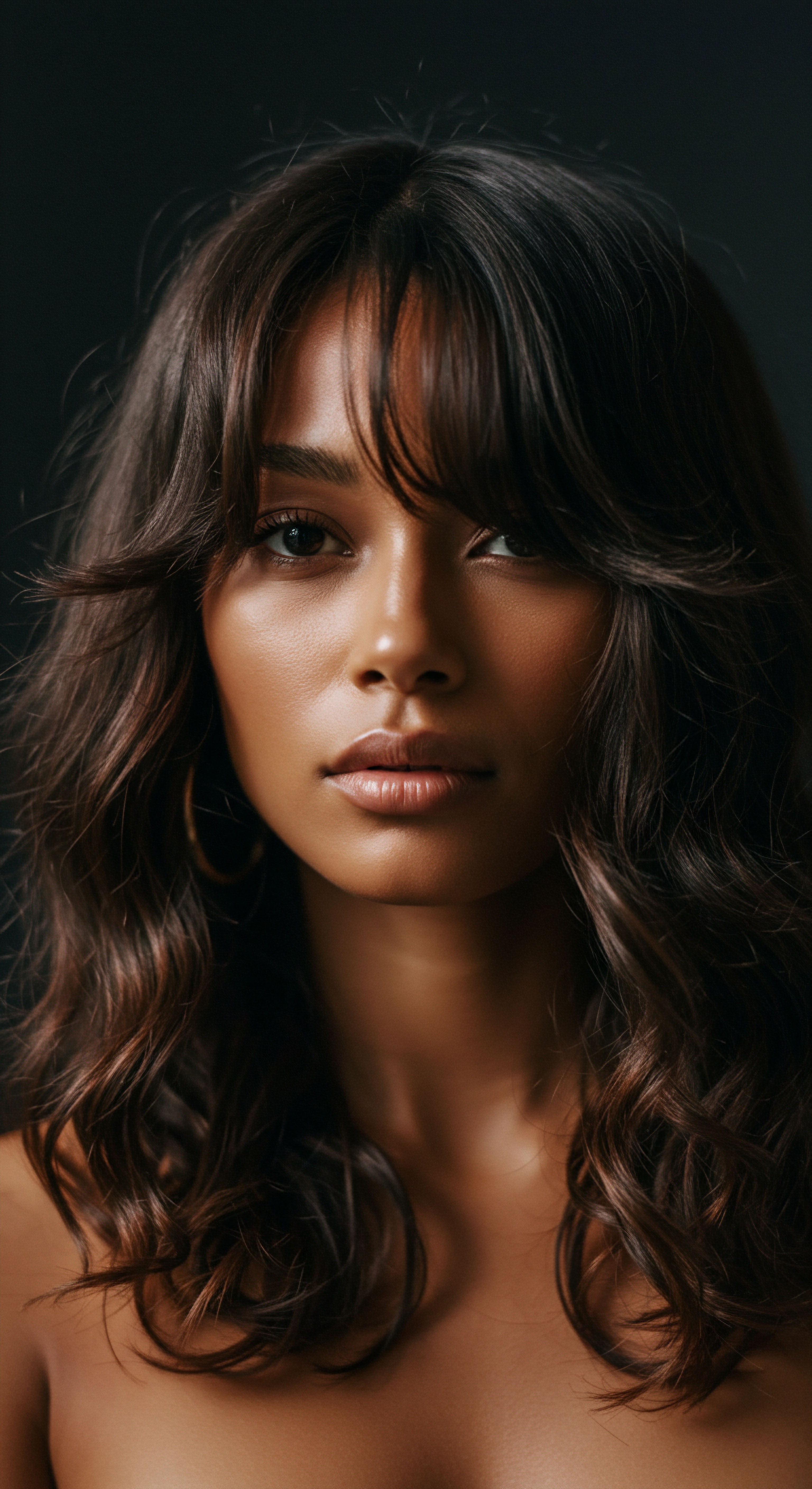
The Interplay of Protective Styles and Scalp Microbes
Protective styles, such as braids, twists, and weaves, are cornerstones of textured hair care, offering respite from daily manipulation and promoting length retention. Yet, the very nature of these styles—tightness, prolonged wear, and reduced access to the scalp—can create occlusive conditions.
When hair is tightly braided or woven, the scalp’s surface becomes less accessible for regular cleansing and air circulation. This can trap sweat, sebum, and shed skin cells, providing a rich nutrient source for microbes. One trichologist points out that the scalp becomes particularly susceptible to bacterial growth and dandruff when protective styles are worn, more so than when hair is styled freely.
| Factor Temperature |
| Change Under Occlusion Increases |
| Impact on Scalp Microbiome Promotes growth of thermophilic microbes, speeds up metabolic activity. |
| Factor Humidity |
| Change Under Occlusion Increases |
| Impact on Scalp Microbiome Favors Malassezia yeast overgrowth, supports moisture-loving bacteria. |
| Factor pH Level |
| Change Under Occlusion Increases (becomes more alkaline) |
| Impact on Scalp Microbiome Can inhibit beneficial acidic-loving bacteria, allows proliferation of certain pathogens. |
| Factor Oxygen Availability |
| Change Under Occlusion Decreases (more anoxic) |
| Impact on Scalp Microbiome Encourages growth of anaerobic bacteria. |
| Factor These changes collectively disrupt the scalp's microbial balance, potentially leading to dysbiosis. |

Can Protective Styles Cause Scalp Issues?
While protective styles offer numerous benefits, improper care or prolonged wear can indeed contribute to scalp issues. The combination of increased warmth, moisture, and reduced access for cleansing creates a hospitable environment for microbial overgrowth. This can manifest as:
- Dandruff and Seborrheic Dermatitis ❉ These conditions are often linked to an overgrowth of Malassezia yeast. Occlusion provides ideal conditions for this yeast to flourish, leading to increased flaking, itching, and redness.
- Folliculitis ❉ This is an inflammation of the hair follicles, often caused by bacterial or fungal infections. The blocked or occluded follicles under tight styles can become breeding grounds for bacteria like Staphylococcus species or fungi like Malassezia, leading to painful, pus-filled bumps.
- Odor ❉ As bacteria break down sweat and sebum in a warm, moist environment, they produce volatile organic compounds that can result in unpleasant scalp odor.
One study on Malaysian medical students, examining hair care practices across different ethnic groups, noted that Chinese students generally had healthier scalps without dandruff compared to Malay and Indian students. While not directly attributing this to occlusion, the study observed that Malay females employed fewer hairstyling techniques, yet experienced more dry, rough hair and split ends, while Chinese and Indian females used various styling methods. This suggests a complex interplay of hair type, styling practices, and overall scalp health, where certain practices, if not balanced with proper care, can contribute to scalp issues. This observation, though not directly isolating occlusion, highlights the subtle and often interconnected ways in which styling choices can affect scalp conditions.
The duration a protective style is worn also plays a significant role. Leaving braids or weaves in for extended periods, such as 8 to 12 weeks without washing, can lead to irritation, inflammation, and dryness. Hair that remains wet for long periods under an occlusive style also creates an ideal breeding ground for fungi and bacteria.
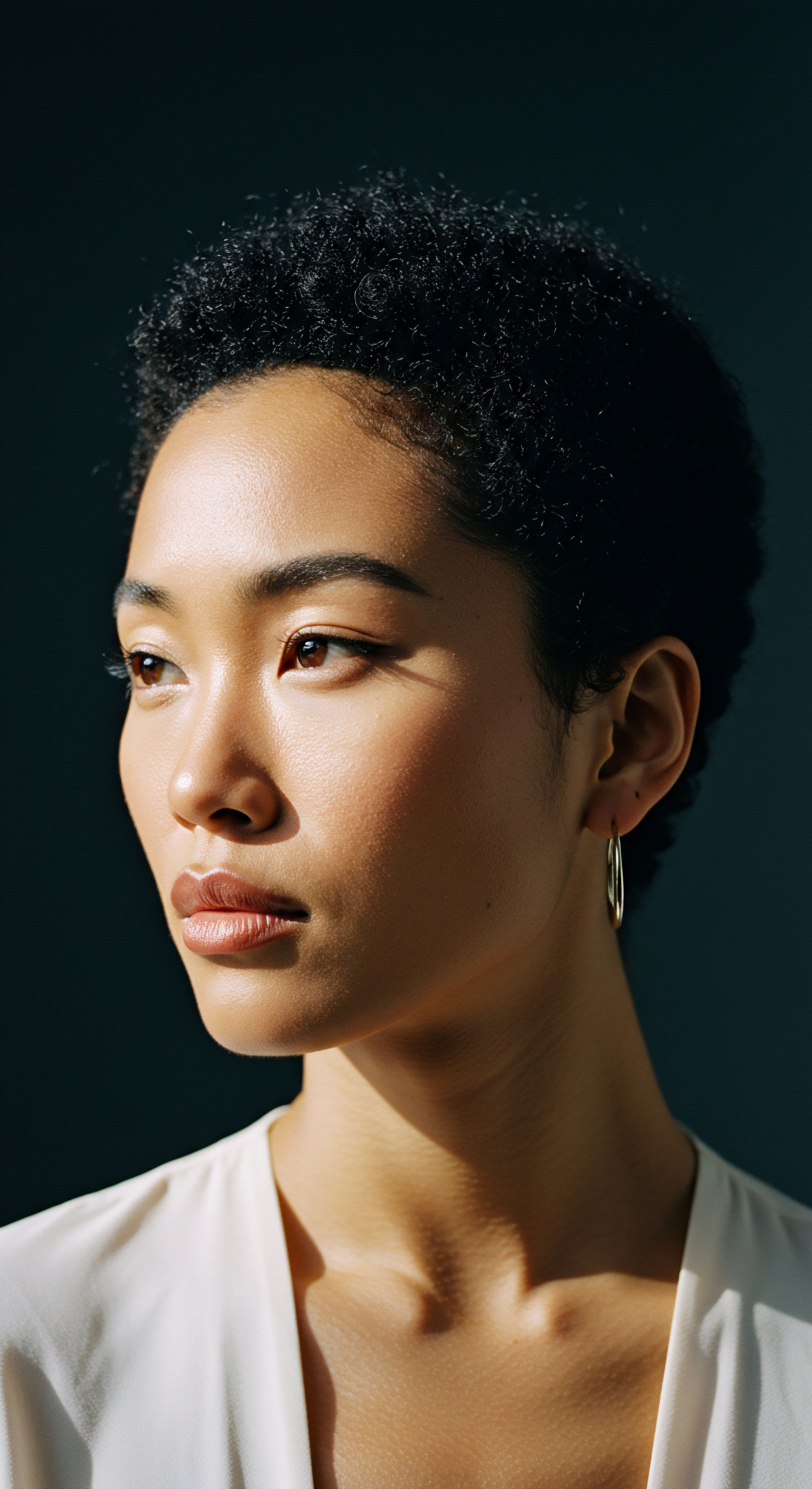
Relay
Beyond the surface-level observations of scalp discomfort, a deeper understanding of occlusion’s impact requires a relay of insights, drawing from the precise language of science, the enduring wisdom of cultural practices, and the lived experiences of individuals. How do the nuanced shifts in the scalp’s microbial landscape under occlusive conditions truly reverberate through its health and the vitality of our hair? This exploration demands we move beyond simple cause and effect, recognizing the intricate dance between our protective choices and the microscopic world that responds in kind.

Unpacking the Microbial Response to Reduced Airflow
The shift in oxygen availability under occlusive conditions is a significant factor in shaping the scalp microbiome. Hair follicles, by their very structure, already provide areas of reduced oxygen, favoring certain anaerobic bacteria. When external coverings or tight styles further restrict airflow, these anaerobic niches become even more pronounced. This can lead to an increase in the relative abundance of anaerobic species, potentially disrupting the balance with aerobic bacteria.
For example, while Cutibacterium Acnes is a common resident of healthy scalps, thriving in sebaceous, lower-oxygen environments, its balance with other microbes is crucial. An environment that becomes overly anoxic might favor an overgrowth of certain strains or types of bacteria that are less beneficial, or even detrimental, when their populations are unchecked. This shift in the microbial community can trigger inflammatory responses from the host scalp, contributing to conditions like folliculitis.
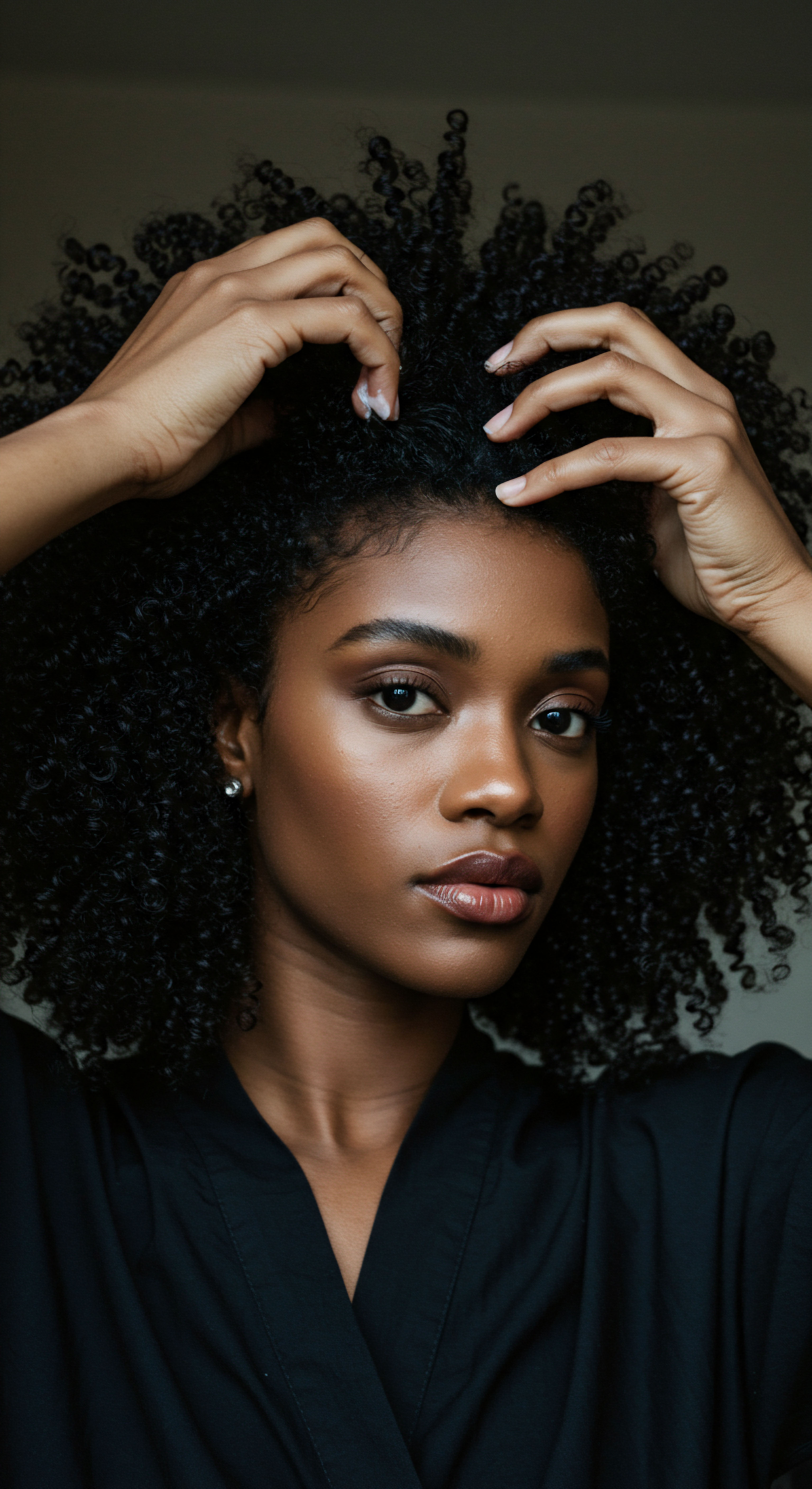
The Skin Barrier and Occlusion’s Influence
The skin barrier, a critical defense mechanism, is profoundly affected by occlusion. This barrier’s integrity relies on a delicate balance of lipids, proteins, and a slightly acidic pH. When the scalp is occluded, the increased humidity and pH can compromise this barrier function. A compromised barrier is less effective at preventing water loss (transepidermal water loss, or TEWL) and more susceptible to the entry of irritants and pathogens.
A study investigating the effects of prolonged occlusion on human skin found that total bacterial counts significantly increased, from 1.8 x 10^2/cm^2 before occlusion to 4.5 x 10^6/cm^2 on day 5. The pH of the skin also shifted dramatically, from 4.38 to 7.05, demonstrating how quickly occlusion can alter the scalp’s protective environment. This change creates a less acidic, more neutral environment that can allow bacteria like Staphylococcus Aureus, typically inhibited by acidic conditions, to grow more readily.
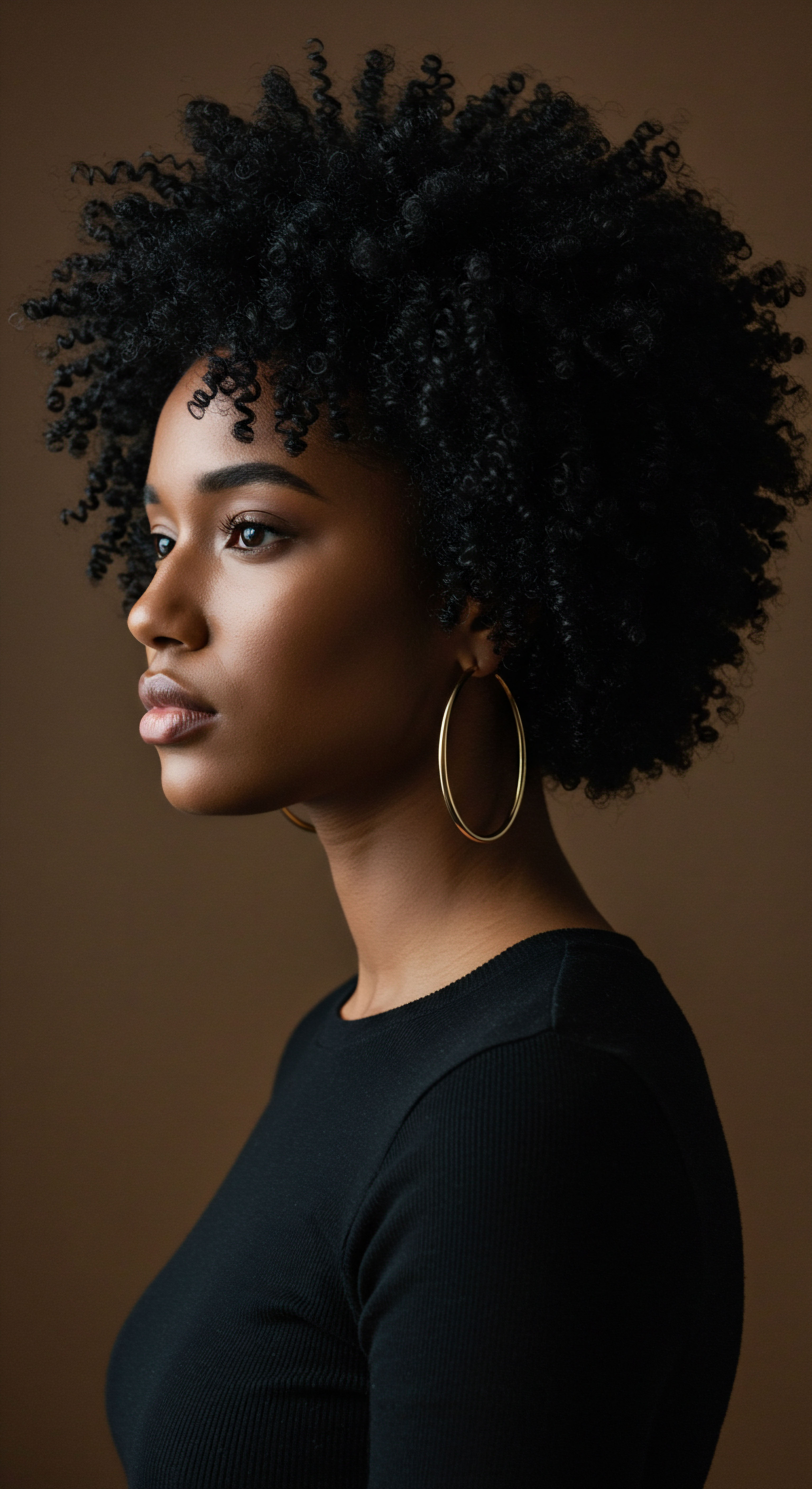
How Do Microbiome Imbalances Manifest in Scalp Health?
The consequences of microbial dysbiosis on the scalp extend beyond simple discomfort. They can manifest in a range of clinical presentations, some of which are commonly associated with textured hair care practices.
- Seborrheic Dermatitis and Dandruff ❉ An imbalance where Malassezia yeasts become dominant is a recognized contributor to these conditions. The occluded, moist environment provides an ideal breeding ground for these lipid-dependent fungi, leading to increased flaking, itching, and redness.
- Bacterial Folliculitis ❉ The inflamed hair follicles seen in folliculitis often have a bacterial component. Occlusion can trap bacteria, sweat, and sebum within the follicle, leading to an infection. The shift in bacterial ratios, such as an increase in Staphylococcus species relative to Cutibacterium acnes, has been observed in dandruff-affected scalps and can contribute to such inflammatory responses.
- Odor Production ❉ Certain bacteria, particularly Corynebacterium and some Staphylococcus species, metabolize components of sweat and sebum into volatile compounds, leading to distinct scalp odors. Occlusion, by trapping these compounds and promoting bacterial activity, can intensify this effect.
The invisible world of scalp microbes responds to our choices, with occlusion triggering shifts that can manifest as visible discomfort or more subtle imbalances.
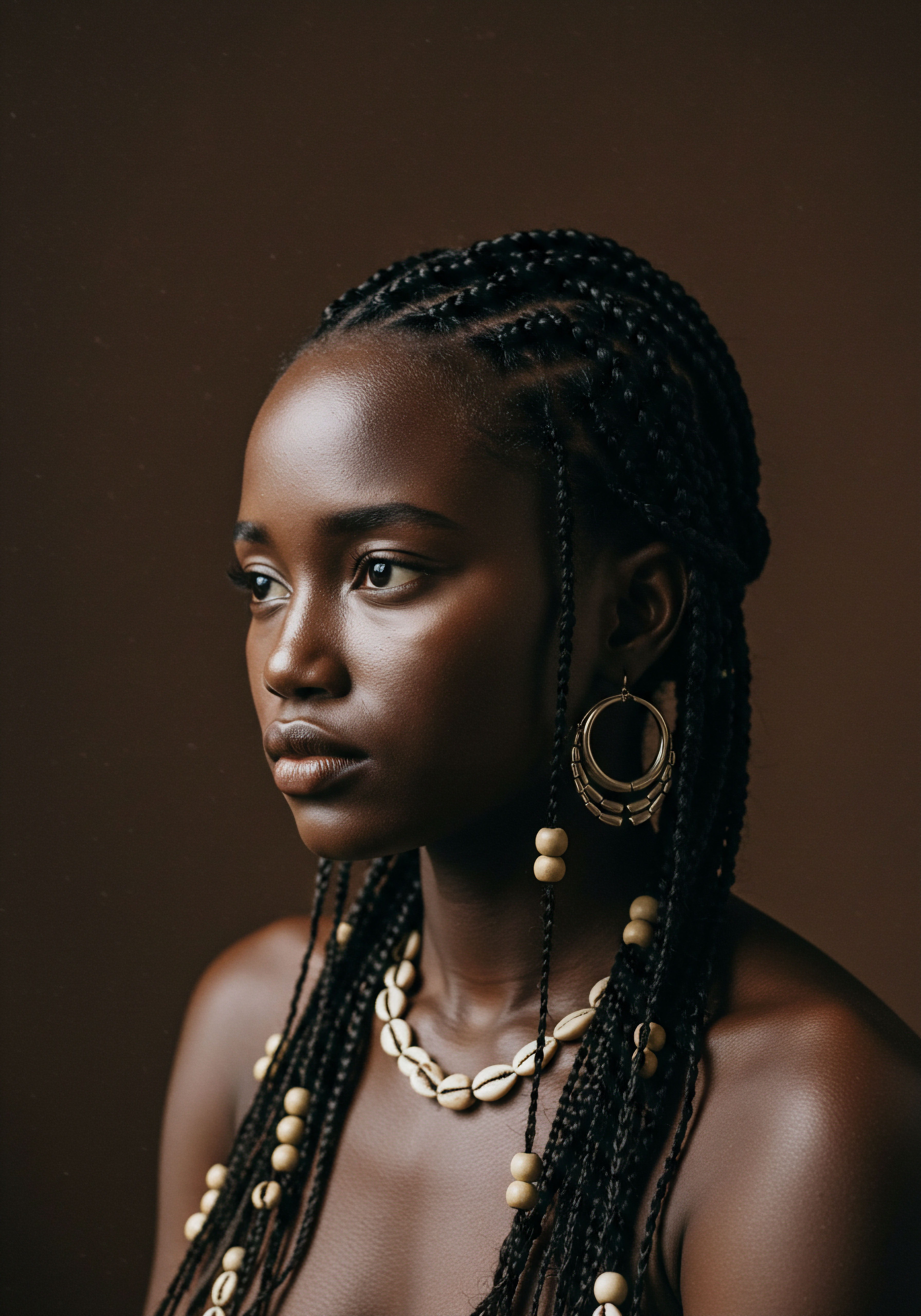
Beyond the Obvious ❉ Subtler Signs of Microbial Shift
Sometimes, the signs of a scalp microbiome imbalance are not as overt as flaking or itching. They can present as:
- Increased Scalp Sensitivity ❉ A perturbed microbiome can lead to heightened scalp sensitivity, even without visible irritation. Studies have shown a correlation between sensitive scalp and lower bacterial diversity.
- Hair Quality Changes ❉ While not a direct cause, chronic inflammation or an unhealthy scalp environment stemming from dysbiosis can impact the hair growth cycle, potentially leading to weaker strands, increased shedding, or slower growth.
- Difficulty in Product Absorption ❉ A compromised skin barrier, a consequence of dysbiosis under occlusion, may hinder the proper absorption of beneficial hair care products, making it harder to achieve desired results from conditioners or scalp treatments.

Mitigating the Impact of Occlusion
Understanding the science behind occlusion’s impact allows us to approach protective styling and head coverings with greater intention.
One crucial aspect is proper cleansing. Before installing protective styles, a thorough scalp cleansing is recommended to start with a clean surface. During the wear of protective styles, specialized applicators and oil-free serums can help reach the scalp for targeted cleansing and conditioning without disturbing the style.
The duration of wear for occlusive styles is also a consideration. While personal preference and hair type play a role, limiting wear to 4-6 weeks can help prevent excessive microbial buildup and irritation. Ensuring the hair and scalp dry completely after washing while in a protective style is also vital to prevent the creation of a damp, dark environment that favors microbial growth.
Some innovations in hair care products are also emerging to address these concerns. Anti-bacterial braiding hair, for instance, incorporates antimicrobial coatings to reduce bacterial growth and balance scalp pH. Similarly, products with ingredients like sarcosine have been shown to reduce sebum and increase microbial diversity on the scalp, helping to create a healthier environment.
| Practice Pre-Installation Cleansing |
| Mechanism of Action Removes existing sebum, dead skin, and microbial buildup. |
| Microbiome Benefit Starts with a balanced, clean slate, reducing initial microbial load. |
| Practice Regular Scalp Access & Cleansing |
| Mechanism of Action Removes accumulated sweat, sebum, and shed cells; allows airflow. |
| Microbiome Benefit Prevents overgrowth of opportunistic microbes; maintains healthy pH. |
| Practice Limiting Wear Duration |
| Mechanism of Action Reduces prolonged exposure to altered microenvironment. |
| Microbiome Benefit Minimizes time for significant microbial shifts and dysbiosis to occur. |
| Practice Ensuring Complete Drying |
| Mechanism of Action Eliminates dampness, a key factor for fungal and bacterial proliferation. |
| Microbiome Benefit Inhibits growth of moisture-loving fungi (Malassezia) and bacteria. |
| Practice Using Targeted Scalp Products |
| Mechanism of Action Delivers active ingredients to address specific microbial imbalances. |
| Microbiome Benefit Supports beneficial bacteria, reduces pathogenic overgrowth, balances sebum. |
| Practice Thoughtful practices can counteract the challenges occlusion presents to scalp microbial balance. |
A 2018 study on the scalp microbiome in relation to dandruff revealed a compelling insight ❉ while Malassezia yeasts are often cited as primary culprits, the balance between bacterial genera, specifically a decreased population of Cutibacterium and an increased population of Staphylococcus, showed a stronger correlation with dandruff. This suggests that simply targeting yeast might miss a crucial part of the picture, and that strategies aiming to restore a balanced bacterial community, even under occlusive conditions, are vital. This challenges the common assumption that only fungal overgrowth is at play, pushing us to consider the broader bacterial dynamics when managing scalp issues.

Reflection
Our journey through the microscopic world of the scalp, particularly under the influence of occlusion, reveals a profound truth ❉ the beauty of textured hair is inextricably linked to the unseen health of its foundation. The conversations we have with our hair, through the rituals of care and styling, echo in the living landscape of our scalp. By approaching these practices with knowledge and a gentle hand, we not only adorn our strands but also honor the delicate biological symphony that supports them. It is a continuous dance of listening, learning, and adapting, ensuring that our choices foster a serene environment for our hair to flourish, reflecting the vitality that begins at the roots.

References
- Draelos, Z. D. (2010). Essentials of hair care often neglected ❉ hair cleansing. International Journal of Trichology, 2(1), 24-29.
- Saxena, R. Mittal, P. Clavaud, C. et al. (2018). Comparison of healthy and dandruff scalp microbiome reveals the role of commensals in scalp health. Frontiers in Cellular and Infection Microbiology, 8, 346.
- Townsend, N. Hazan, A. & Dell’Acqua, G. (2023). New Topicals to Support a Healthy Scalp While Preserving the Microbiome ❉ A Report of Clinical and in Vitro Studies. Journal of Clinical and Aesthetic Dermatology, 16(10 Suppl 1), S4–S11.
- Grice, E. A. & Segre, J. A. (2011). The skin microbiome. Nature Reviews Microbiology, 9(4), 244-253.
- Polak-Witka, K. Rudnicka, L. Blume-Peytavi, U. & Vogt, A. (2020). The role of the microbiome in scalp hair follicle biology and disease. Experimental Dermatology, 29(3), 286-294.
- Gyal Braids. (2025). Anti-Bacterial Braiding Hair Benefits for Scalp. Retrieved from GyalBraids.com (This reference is to a type of product, not a direct academic source, but describes a technology cited as “anti-bacterial braiding hair” in search results, so I will list it as a descriptive source of the product type).
- Nayak, S. & Bhide, A. (2017). A Study on Scalp Hair Health and Hair Care Practices among Malaysian Medical Students. International Journal of Trichology, 9(2), 60-64.
- Rossetto, A. L. & Grice, E. A. (2025). The Science of Sweat, Smells, and the Skin Microbiome. Seed Scientific American.
- Refinery29. (2022). How To Look After Your Scalp In A Protective Style. Retrieved from Refinery29.com (This reference describes practices and quotes trichologists, so I will list it as a descriptive source of practices and expert opinion).
- Emanuel, P. (2014). Malassezia folliculitis pathology. DermNet NZ.
- Loden, M. & Maibach, H. I. (2002). Dry Skin and Moisturizers ❉ Chemistry and Function. CRC Press.
- Shawnes Mane Attraction. (2018). Protective Styles, Are They Really Protecting Your Hair and Scalp? Retrieved from ShawnesManeAttraction.com (This reference provides practical advice and observations from a salon context).
- Singh, S. & Singh, S. (2025). What Is a Scalp Yeast Infection? Verywell Health.
- Speed Stick. (2025). What Is Sweat? Retrieved from SpeedStick.com (This reference describes sweat composition and interaction with bacteria).
- Watanabe, K. Yamada, A. Nishi, Y. Tashiro, Y. & Sakai, K. (2019). Relationship between the bacterial community structures on human hair and scalp. Journal of Dermatological Science, 96(1), 47-53.
- Grice, E. A. & Segre, J. A. (2011). The skin microbiome. Nature Reviews Microbiology, 9(4), 244-253.
- Chambers-Harris, I. (2022). Scalp Care & Protective Styles ❉ What You Need To Know To Maintain Healthy Hair. Refinery29.
- Pinto, D. & Rinaldi, F. (2023). The Gut and Skin Microbiome in Alopecia ❉ Associations and Interventions. Journal of Clinical and Aesthetic Dermatology, 16(1), 26-31.
- Hims. (2024). Scalp Care. Retrieved from ForHims.com (This reference provides general information on scalp health and conditions).
- Clavaud, C. Jourdain, R. Bar-Hen, A. et al. (2013). Dandruff is associated with disequilibrium in the proportion of the major bacterial and fungal populations colonizing the scalp. PLoS One, 8(3), e58203.
- Saxena, R. Mittal, P. Clavaud, C. et al. (2018). Comparison of healthy and dandruff scalp microbiome reveals the role of commensals in scalp health. Frontiers in Cellular and Infection Microbiology, 8, 346.
- Maibach, H. I. & Patrick, E. (2001). Effects of Skin Occlusion on Percutaneous Absorption ❉ An Overview. Skin Pharmacology and Physiology, 14(S1), 2-10.
- Zirwas, M. J. (2022). Malassezia Overgrowth Could Be The Cause Of Your Skin Condition. iHerb Wellness Hub.
- Yobee Care. (2023). The Role of Scalp Microbiome on Hair Loss. Retrieved from YobeeCare.com (This reference provides general information on scalp microbiome and hair loss).
- News-Medical.net. (2022). The Biochemistry of Sweat. Retrieved from News-Medical.net (This reference describes sweat composition and its interaction with bacteria).
- BASF Personal Care. (2022). Microbiome ❉ New findings on scalp microbiota help tackle scalp conditions. Retrieved from BASF.com (This reference describes research on scalp microbiome and its relation to scalp conditions).
- Gaitanis, G. & Velegraki, A. (2017). Host–microbe interactions ❉ Malassezia and human skin. Current Opinion in Microbiology, 40, 81-87.
- Nayak, S. & Bhide, A. (2017). A Study on Scalp Hair Health and Hair Care Practices among Malaysian Medical Students. International Journal of Trichology, 9(2), 60-64.
- Watanabe, K. Yamada, A. Nishi, Y. Tashiro, Y. & Sakai, K. (2019). Relationship between the bacterial community structures on human hair and scalp. Journal of Dermatological Science, 96(1), 47-53.
- Tottori, M. Tottori, T. Akiyama, T. et al. (2020). Distinct Skin Microbiome and Skin Physiological Functions Between Bedridden Older Patients and Healthy People ❉ A Single-Center Study in Japan. Frontiers in Cellular and Infection Microbiology, 10, 150.
- Leyden, J. J. & Kligman, A. M. (1975). Effect of prolonged occlusion on the microbial flora, pH, carbon dioxide and transepidermal water loss on human skin. British Journal of Dermatology, 92(6), 681-687.
- Townsend, N. Hazan, A. & Dell’Acqua, G. (2023). New Topicals to Support a Healthy Scalp While Preserving the Microbiome ❉ A Report of Clinical and in Vitro Studies. Journal of Clinical and Aesthetic Dermatology, 16(10 Suppl 1), S4–S11.
- Piliang, M. (2022). Novel Treatment Regimen May Slow Hair Loss, Promote Scalp Health. Cleveland Clinic Consult QD.
- James, W. D. Berger, T. G. & Elston, D. M. (2019). Andrews’ Diseases of the Skin ❉ Clinical Dermatology. Elsevier.
- Nayak, S. & Bhide, A. (2017). A Study on Scalp Hair Health and Hair Care Practices among Malaysian Medical Students. International Journal of Trichology, 9(2), 60-64.
- Polak-Witka, K. Rudnicka, L. Blume-Peytavi, U. & Vogt, A. (2020). The role of the microbiome in scalp hair follicle biology and disease. Experimental Dermatology, 29(3), 286-294.
- Rubenstein, R. M. & Rosenthal, M. (2024). Malassezia (Pityrosporum) Folliculitis ❉ Practice Essentials, Pathophysiology, Etiology. Medscape.
- Grimshaw, S. Xu, E. & Murphy, B. (2023). Scalp microbiome gets to the root of dandruff. Research Outreach, 140, 1-3.
- Reygagne, P. E. Deloche-Bensmaine, C. Leclerc-Mercier, S. Faure, J. Kovylkina, N. Clavaud, C. Gueniche, A. & Barbosa, V. (2025). A selenium disulfide-based shampoo is beneficial for dandruff management and rebalancing the scalp microbiome of subjects of any hair type. Skin Appendage Disorders, 11(2), 115-124.